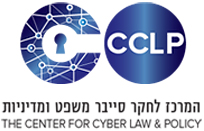PI: KKarni A. Chagal-Feferkorn
Abstract:
Over the years mankind has come to rely increasingly on machines. Technology is ever advancing, and in addition to relinquishing physical and mere computational tasks to machines, algorithms' self-learning abilities now enable us to entrust machines
with professional decisions, for instance, in the fields of law, medicine and accounting. A growing number of scholars and entities now acknowledge that whenever certain "sophisticated" or "autonomous" decision-making systems cause damage, they should no longer be subject to products liability but deserve different treatment from their "traditional" predecessors. What is it that separates "traditional" algorithms and machines that for decades have been subject to traditional product liability legal framework from what I would call "thinking algorithms," that seem to warrant their own custom-made treatment? Why have "auto-pilots," for example, been traditionally treated as "products," while autonomous vehicles are suddenly perceived as a more "human-like" system that requires different reatment? Where is the line between machines drawn? Scholars who touch on this question, have generally referred to the system's level of autonomy as a classifier between traditional products and systems incompatible with products liability laws (whether autonomy was mentioned expressly, or reflected in the specific questions posed). This article, however, argues that a classifier based on autonomy level is not a good one, given its excessive complexity, the vague classification process it dictates, the inconsistent results it might lead to, and the fact said results mainly shed light on the system's level of autonomy, but not on its compatibility with products liability laws. This article therefore proposes a new approach to distinguishing traditional products from "thinking algorithms" for the etermining whether products liability should apply. Instead of examining the vague concept of "autonomy," the article analyzes the system's specific features and examines whether they promote or hinder the rationales behind the products liability legal framework. The article thus offers a novel, practical method for decision-makers wanting to decide when products liability should continue to apply to "sophisticated" systems and when it should not. ... Read More in the PDF FIle.





